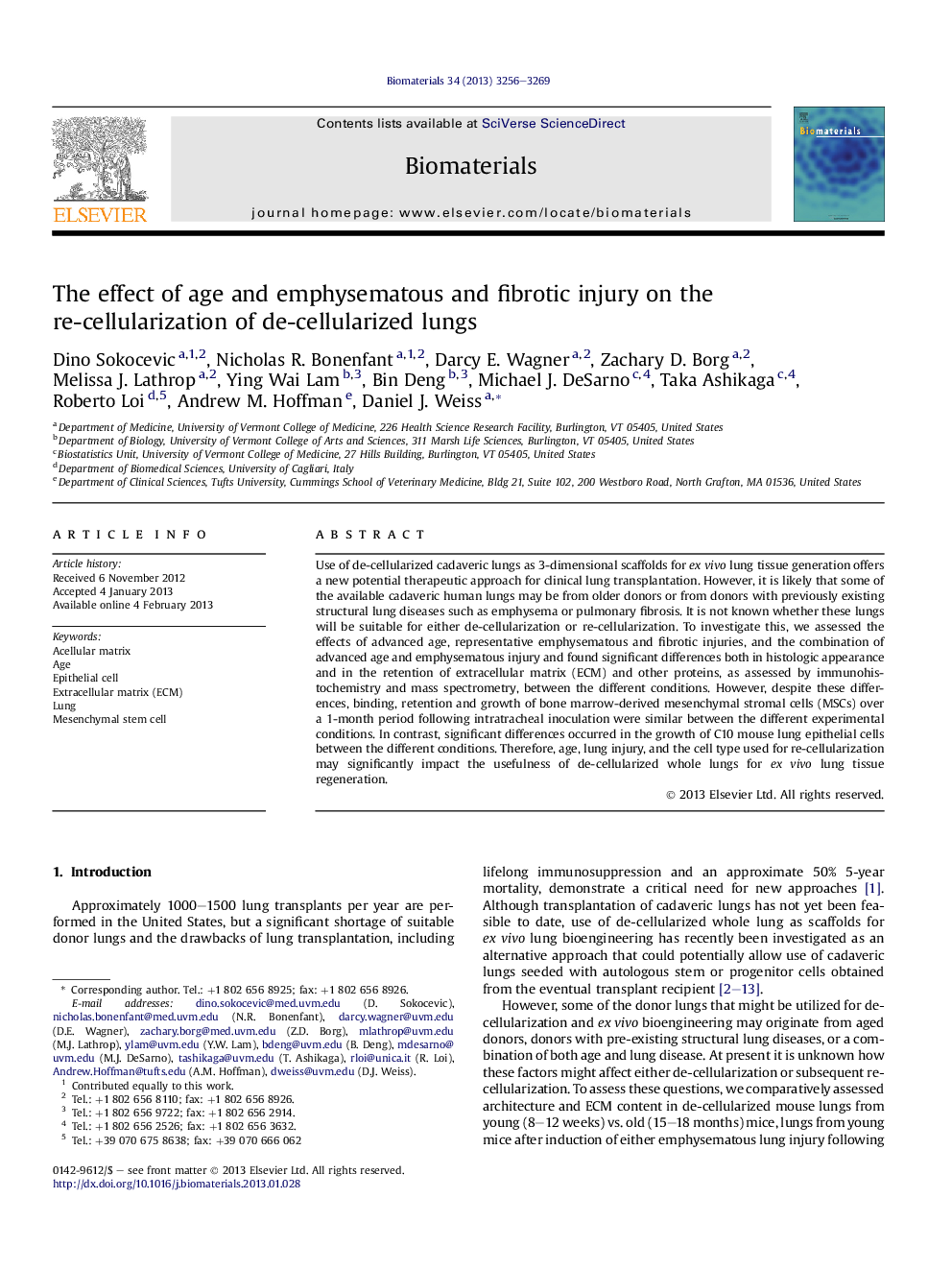| Article ID | Journal | Published Year | Pages | File Type |
|---|---|---|---|---|
| 10229166 | Biomaterials | 2013 | 14 Pages |
Abstract
Use of de-cellularized cadaveric lungs as 3-dimensional scaffolds for ex vivo lung tissue generation offers a new potential therapeutic approach for clinical lung transplantation. However, it is likely that some of the available cadaveric human lungs may be from older donors or from donors with previously existing structural lung diseases such as emphysema or pulmonary fibrosis. It is not known whether these lungs will be suitable for either de-cellularization or re-cellularization. To investigate this, we assessed the effects of advanced age, representative emphysematous and fibrotic injuries, and the combination of advanced age and emphysematous injury and found significant differences both in histologic appearance and in the retention of extracellular matrix (ECM) and other proteins, as assessed by immunohistochemistry and mass spectrometry, between the different conditions. However, despite these differences, binding, retention and growth of bone marrow-derived mesenchymal stromal cells (MSCs) over a 1-month period following intratracheal inoculation were similar between the different experimental conditions. In contrast, significant differences occurred in the growth of C10 mouse lung epithelial cells between the different conditions. Therefore, age, lung injury, and the cell type used for re-cellularization may significantly impact the usefulness of de-cellularized whole lungs for ex vivo lung tissue regeneration.
Related Topics
Physical Sciences and Engineering
Chemical Engineering
Bioengineering
Authors
Dino Sokocevic, Nicholas R. Bonenfant, Darcy E. Wagner, Zachary D. Borg, Melissa J. Lathrop, Ying Wai Lam, Bin Deng, Michael J. DeSarno, Taka Ashikaga, Roberto Loi, Andrew M. Hoffman, Daniel J. Weiss,
